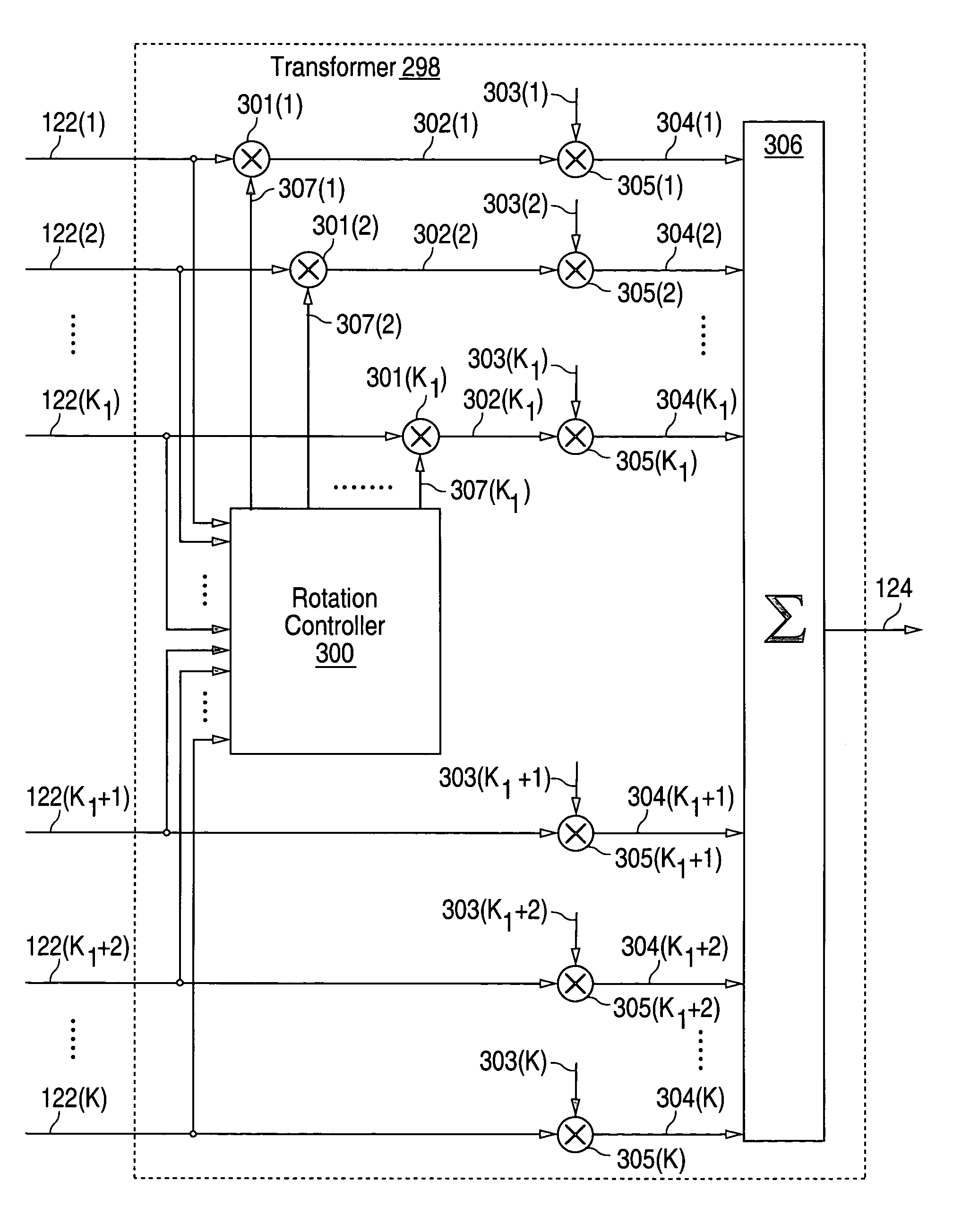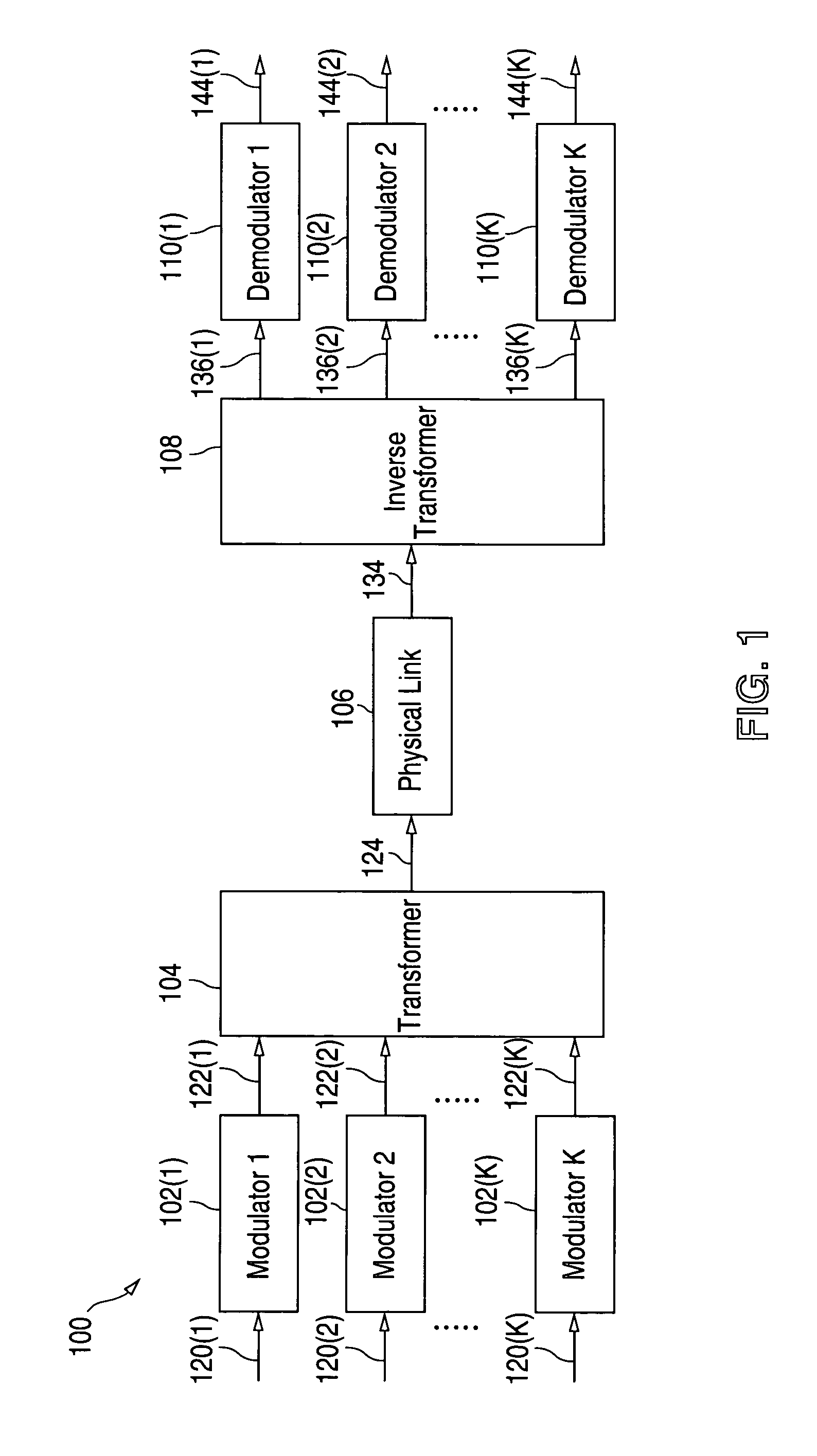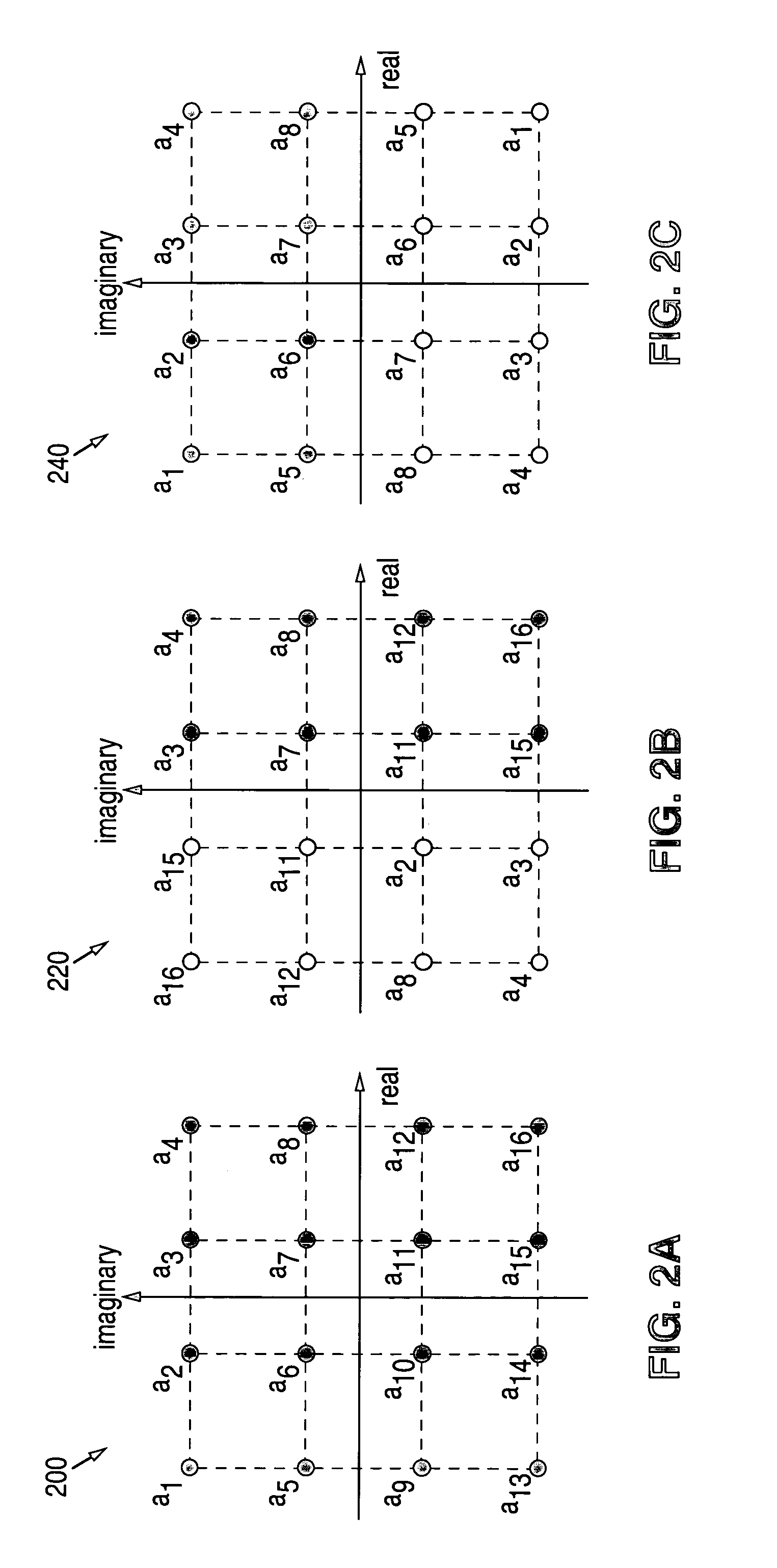Method for reducing peak-to-average power ratios in a multi-carrier transmission system
a transmission system and multi-carrier technology, applied in the field of communication systems, can solve the problems of reducing power efficiency and average power emission, high peak-to-average power ratio, and reducing power efficiency and average power, so as to reduce the peak-to-average power ratio (par), reduce redundancy, and reduce the effect of par for multi-carrier transmission system
- Summary
- Abstract
- Description
- Claims
- Application Information
AI Technical Summary
Benefits of technology
Problems solved by technology
Method used
Image
Examples
Embodiment Construction
[0031]FIGS. 1 through 9, discussed below, and the various embodiments used to describe the principles of the present invention in this patent document are by way of illustration only and should not be construed in any way to limit the scope of the invention. Those skilled in the art will understand that the principles of the present invention may be implemented in any suitably arranged multi-carrier transmission system.
[0032]The embodiments and explanation provided below describe a peak-to-average power ratio (PAR) reduction technique that may be implemented in a multi-carrier transmission system. The description includes a basic realization of multi-carrier transmission systems for precise and clear explanation. Therefore, some techniques, which can be employed together with the PAR reduction technique described in this method, are omitted from the description. For example, the following techniques are not discussed: pilot subcarriers for accurate frequency / phase synchronization, c...
PUM
 Login to View More
Login to View More Abstract
Description
Claims
Application Information
 Login to View More
Login to View More - R&D
- Intellectual Property
- Life Sciences
- Materials
- Tech Scout
- Unparalleled Data Quality
- Higher Quality Content
- 60% Fewer Hallucinations
Browse by: Latest US Patents, China's latest patents, Technical Efficacy Thesaurus, Application Domain, Technology Topic, Popular Technical Reports.
© 2025 PatSnap. All rights reserved.Legal|Privacy policy|Modern Slavery Act Transparency Statement|Sitemap|About US| Contact US: help@patsnap.com



